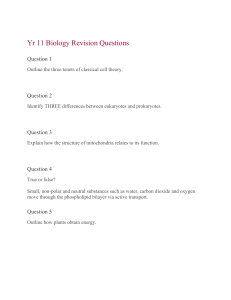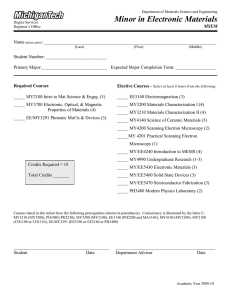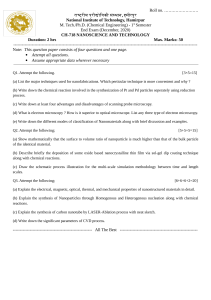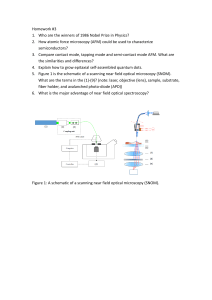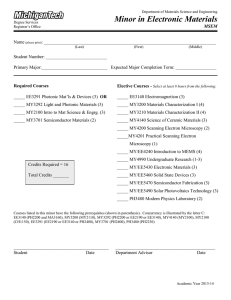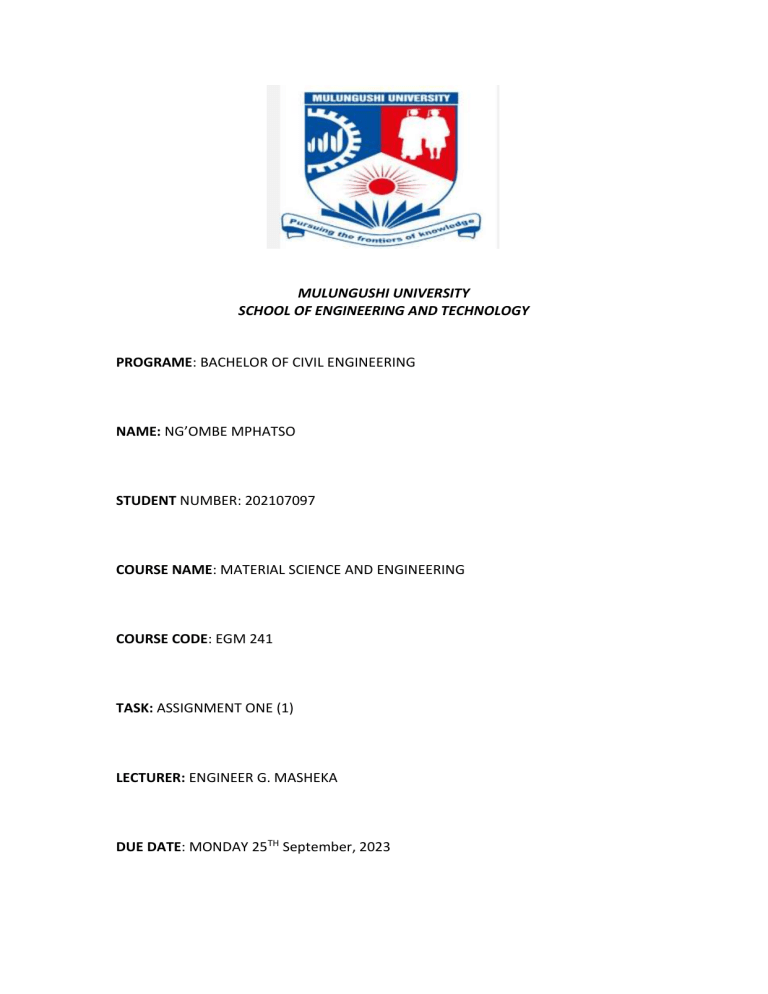
MULUNGUSHI UNIVERSITY SCHOOL OF ENGINEERING AND TECHNOLOGY PROGRAME: BACHELOR OF CIVIL ENGINEERING NAME: NG’OMBE MPHATSO STUDENT NUMBER: 202107097 COURSE NAME: MATERIAL SCIENCE AND ENGINEERING COURSE CODE: EGM 241 TASK: ASSIGNMENT ONE (1) LECTURER: ENGINEER G. MASHEKA DUE DATE: MONDAY 25TH September, 2023 1 MICROSCOPIC EXAMINATION TECHNIQUES OF MATERIALS Microscopic examination of defects is crucial for quality control and failure analysis in various industries. It is a useful tool in the study and characterization of materials. This is an important tool that can be used to ensure the association between the properties an structures are properly understood. The following are the microscopic techniques and there importance; Optical microscopy In this technique the light microscope is use study micro-structures, while optical and illumination system as its basic element. It is cardinal for quick and nondestructive inspection for surface defects, such as cracks, scratches and discontinuities. Electron microscopy Consequently, some structural elements are too fine and small to permit optical examination hence, the electron microscopy technique is introduced because of its capability of much higher magnification of approximately 2000 time of optical 1 2 microscopy. This technique is subdivide into Scanning electron microscopy and Transmission electron microscopy. Scanning electron microscopy Provides high-resolution images by scanning a focused electron beam across the sample surface. It is essential for detailed analysis of micro-structures, identification of fractures and determining the elemental composition of defects. 2 3 Transmission electron microscopy It is used to examine the defects at the nanoscale. If gives information about crystallography, defects in atoms lattices and interfaces.it is the best technique that can be used to understand material behaviour at the atomic level. Scanning Prob Microscopy This is more advanced technique that does not use light or electrons to form an image , rather the microscope generates topographical maps, on an atom scale, that is a representation of features and characteristics of the specimen being examined. This technique can be used for the examination of nanometre scale wit a magnification of 109 X and much better resolutions are attainable. 3 4 It can also be used in three dimensional magnification of images that provide topological information about features of interest. However it provides an advantage of particular specimens being examined in there most suitable environment. It is through these techniques that engineers and scientists are able to improve product quality, troubleshoot issues and advance materials science. 4 5 References William D. Callister, j., 2014. Microscopic examination. In: material science and engineering. united states of America: John Willley and Sons, pp. 97-102. Mark Hersam, 2022. Wikipedia. [Online] Available at: https://en.m.wikipedia.org/wiki/microscopy [Accessed 21 September 2023]. 5
